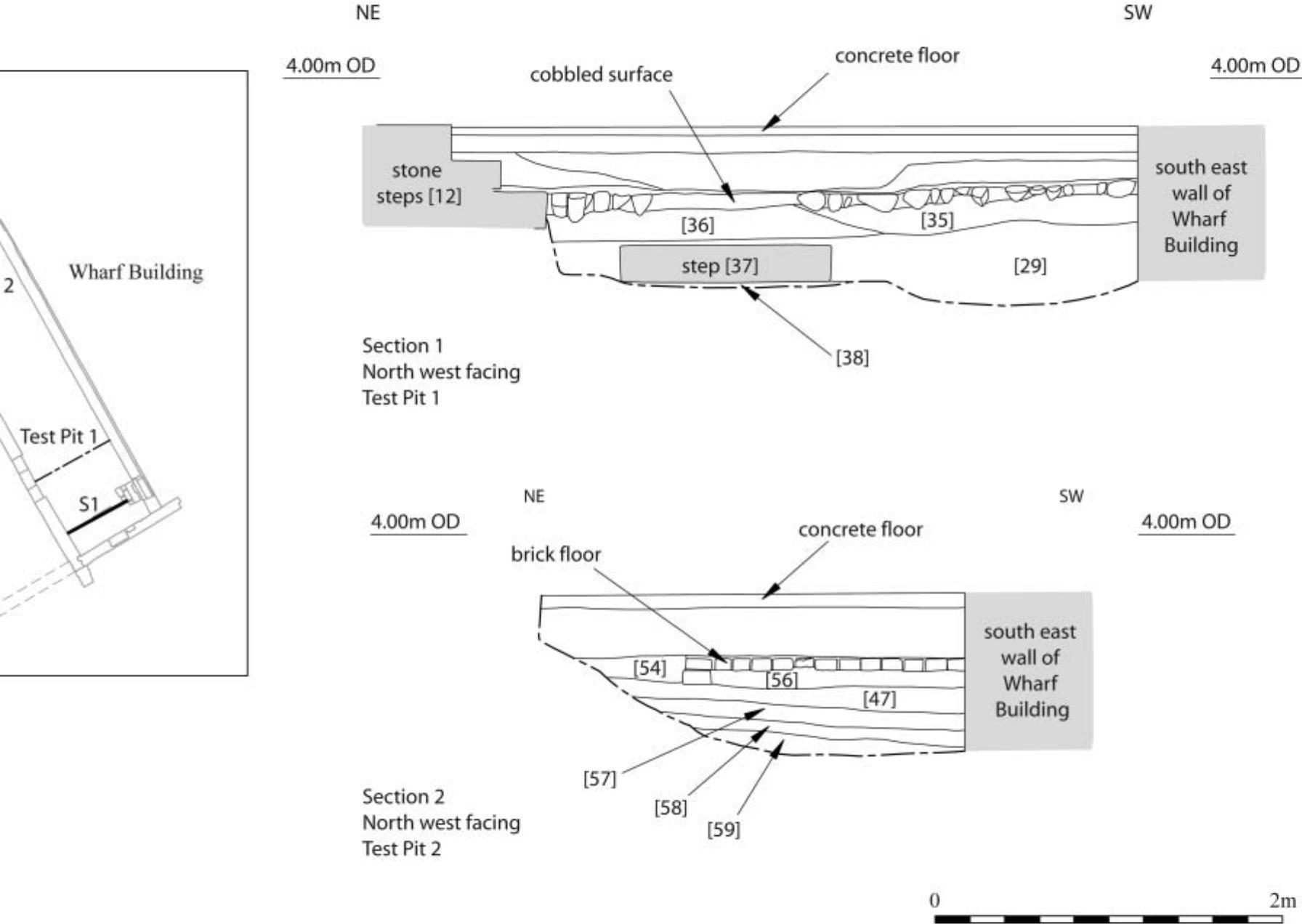Archaeological Investigations at Swalwell Ironworks, Tyne and Wear
2011, Industrial Archaeology Review
https://doi.org/10.1179/174581911X13070247656462Abstract
AI
AI
A programme of archaeological investigations at the Swalwell Ironworks site, founded by Sir Ambrose Crowley in 1707, revealed well-preserved remains of structures including the eastern Grand Warehouse and a historic forge building. Key findings included modifications to these structures over time, documentary evidence correlating with archaeological findings, and archaeometallurgical analyses indicating activities like puddling. The study underscores the industrial significance of the ironworks and its transformation through various phases until its closure in 1912.
Key takeaways
AI
AI
- Excavations revealed well-preserved 18th-century remains of Swalwell Ironworks, founded in 1707.
- The Grand Warehouse, dating from 1713, served as a wharf for loading goods.
- Archaeometallurgical analysis suggests the site included a puddling furnace, crucial for iron production.
- Comprehensive historical research aligned with archaeological evidence, confirming the site's significance.
- The project highlights gaps in knowledge regarding 19th-century iron-making technology and furnace types.
References (21)
- at Crowley's Iron Works, Swalwell, Gateshead' (NCC unpublished, 2004).
- Cranstone, D., 'From Slitting Mill to Alloy Steel: the Development of Swalwell Ironworks', Industrial Archaeology Review, this volume, 41-57.
- Pre-Construct Archaeology Ltd, 'An Archaeo- logical Excavation at Sands Road, Swalwell, Gates- head, Tyne and Wear. Post-Excavation Assessment Report' (PCA unpublished, 2007).
- Mackenzie, R.G., 'Archaeometallurgical Assess- ment', in Pre-Construct Archaeology, ref. 5.
- Morse, T., 'Geological Assessment', in Pre- Construct Archaeology, ref. 5.
- Nolan, J., 'Brick Assessment', in Pre-Construct Archaeology, ref. 5.
- Davison, P.J., Brickworks of the North-East (Gateshead: Gateshead Libraries and Art Services, 1986), 131. 10 Ibid., 132, 138. 11 Ibid., 132, 136. 12 Ibid., 89.
- Brearley, H., The Heat Treatment of Tool Steel (Longmans, 1911), 10.
- Mackenzie, R.G., 'Why pay more?' An Archaeo- metallurgical Investigation of 19th Century Swedish Wrought Iron and Sheffield Blister Steel (unpublished PhD thesis, University of Sheffield, 2004).
- Barraclough, K.C., Steelmaking Before Bessemer: Vol. 1 Blister Steel the Birth of an Industry (The Metals Society, 1984), 4.
- Gordon, R.B., 'Process Deduced from Ironmak- ing Wastes and Artefacts', Journal of Archaeological Science, 24 (1997), 12-14. 17 Ibid.
- Mackenzie, ref. 6.
- Mackenzie, R.G., 'Archaeometallurgical Analysis of Slag and Assessment of Selected Soil Samples from the Site of Crowley's Works, Swalwell' (unpublished, 2009).
- Killick, D. and Gordon, R.B., 'Microstructures of Puddling Slags from Fontley, England and Roxbury, Connecticut, USA', Journal of the Historical Metallurgy Society, 21.1 (1987), 34.
- Turner, T., The Metallurgy of Iron (Charles Griffin & Co. Ltd, 1908), 404. 22 Ibid., 363.
- Berg, T. and Berg, P., R R Angerstein's Illustrated Travel Diary, 1753-1755 (Science Museum, 2001).
- Petts, D. and Gerrard, C., Shared Visions: The North-East Regional Research Framework for the His- toric Environment (Durham County Council, 2006).
- Cranstone, D., 'Industry and Technology', in Shared Visions: The North-East Regional Research Framework for the Historic Environment, ed. by D. Petts and C.M. Gerrard (Durham: Durham County Council, 2006), 92-102 (p. 97).
- Cranstone, D., 'Winlaton Mill Ironworks: an Interim Report', Archaeology North, 2 (1991), 22-4.
- Bayley, J., Crossley, D., and Ponting, M., Metals and Metalworking. A Research Framework for Arch- aeometallurgy, The Historical Metallurgical Society Occasional Publication No. 6 (2008), 69. 28 'Between Archives and the Site: the 19th-Century Iron and Steel Industry in the Monklands, Central Scotland', Post-Medieval Archaeology, 42.1 (2008), 157-80; Smith, J.R. and Trevarthen, M., 'Mount Foundry, Tavistock: an Early 19th-Century Iron and Brass Foundry in West Devon', Post-Medieval Archaeology, 44.2 (2010), 349-55; Trevarthen, M., 'Mount Foundry, Tavistock: an Early 19th-Century Iron and Brass Foundry in West Devon', Proceedings of the Devon Archaeological Society, 67 (2009), 217- 47;
- Belford, P., 'Five Centuries of Iron Working: Excavations at Wednesbury Forge', Post-Medieval Archaeology, 44.1 (2010), 1-53.
 David Cranstone
David Cranstone
















